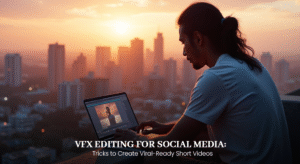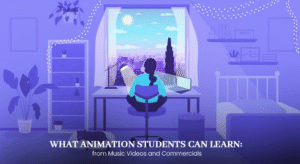
Cultural Impact of Animation Across the Globe
Animation is a multifaceted art form that has spread throughout the world as a storytelling medium. It involves the use of techniques such as stop-motion, computer-generated imagery (CGI), and conventional hand-drawn animation to create moving images through carefully constructed frames. Animation has evolved through inventiveness and imagination, from rudimentary drawings on paper to state-of-the-art technology. Beyond its entertainment value, animation is often seen as a reflection of the cultural values and societal norms of its creators. Animators infuse their work with elements drawn from their own experiences, beliefs, and cultural backgrounds, contributing to the uniqueness of animated narratives and characters. This blog post explores the profound impact animation has had on diverse cultures worldwide, examining how it both mirrors and shapes societal perceptions. It delves into the intricate relationship between animation and cultural identity, exploring both the challenges and opportunities presented by this dynamic interplay. Join us on this fascinating journey through the lens of animation across the globe.
Western Animation Dominance
The global landscape of animation is significantly influenced by the historical dominance of Western animation, with Hollywood being the epicenter. American animation studios like Walt Disney, Warner Bros., and MGM pioneered the art form in the early 20th century, setting trendsetters and influencers. The Disney Effect, created in 1928, has left an indelible mark on the global animation scene, defining Western animation and setting a benchmark for quality and mass appeal. Major studios like Warner Bros. and MGM also played pivotal roles in shaping the global perception of animation, with Looney Tunes becoming a cultural touchstone.
However, the dominance of Western animation has led to challenges, such as the homogenizing effect that may have overshadowed diverse storytelling traditions and artistic styles from other parts of the world. Critics argue that this Western-centric narrative often meant that non-Western cultures had limited representation and struggled to find a global audience. The next section will explore the counter-narrative, examining the rise of non-Western animation industries and the subsequent diversification of the global animation landscape.
Rise of Non-Western Animation
The global animation landscape has seen a significant shift with the rise of non-Western animation industries, challenging the dominance of Hollywood. Asian animation powerhouses include Japanese anime, a globally recognized form of non-Western animation that has transcended borders with its diverse genres, intricate storytelling, and distinct artistic styles. Anime, originating in Japan, reflects Japanese values and introduces audiences to a different approach to storytelling and character development.
Bollywood animation in India has extended its influence into animation, characterized by vibrant colors, musical sequences, and a blend of mythology and contemporary themes. Studios like Green Gold Animation have successfully combined Indian cultural elements with modern storytelling techniques.
One of the key strengths of non-Western animation lies in its ability to weave cultural nuances and storytelling styles unique to each region into the fabric of its narratives. Anime often draws on Shinto beliefs, traditional folklore, and historical events, creating a rich experience that resonates with audiences globally. Bollywood animation often incorporates elements of Indian mythology, folklore, and classical dance forms, providing a visual and narrative experience deeply rooted in the country’s cultural heritage.
These examples highlight the diversity and richness that non-Western animation brings to the global stage.
Cultural Representation in Animation
Cultural representation in animation is a crucial aspect of global society, as it authentically reflects the diverse cultures that co-exist in our world. Animated content, such as Disney’s “Moana,” showcases the importance of avoiding stereotypes and embracing the unique nuances of each culture. This authenticity resonates with audiences, as it showcases diversity in all its forms. Pixar’s “Coco” is an example of a film that celebrates the Mexican Dia de los Muertos, paying homage to Mexican culture while emphasizing universal themes of family and remembrance.
Cultural representation in animation plays a crucial role in fostering inclusivity and understanding among audiences. When individuals from various backgrounds see themselves authentically represented on screen, it promotes a sense of belonging and validates their experiences. Exposure to different cultures through animation cultivates empathy, breaks down stereotypes, and fosters a more inclusive worldview. The impact extends beyond the screen, influencing societal perceptions and contributing to a more interconnected global culture. By embracing and celebrating cultural diversity, animation becomes a catalyst for conversations about identity, heritage, and shared humanity. The challenges posed by cultural stereotypes in animation are acknowledged, emphasizing the responsibility of creators to ensure respectful and accurate portrayals.
Cultural Stereotypes in Animation
Animation has the potential to be a vehicle for cultural understanding, but it has sometimes fallen prey to the perpetuation of cultural stereotypes. These stereotypes can reinforce biases, contribute misinformation, and create a distorted view of different societies. Examples of harmful stereotypes in animation include the portrayal of Indian convenience store owner Apu Nahasapeemapetilon in “The Simpsons” and the portrayal of African characters in early Disney animations. The consequences of cultural stereotypes in animation are far-reaching, shaping societal perceptions and influencing how individuals from different cultural backgrounds are perceived. These stereotypes can limit the range of narratives and perspectives in animated content.
Creators in the animation industry bear a significant responsibility to avoid harmful cultural portrayals by conducting thorough research, consulting with cultural experts, and ensuring characters and narratives are presented with nuance and authenticity. Acknowledging the diversity within cultures and avoiding broad generalizations is key to creating content that respects and reflects the richness of our global society.
Animators must be aware of the potential impact their work can have on shaping societal attitudes, particularly in an era where animated content reaches a vast and diverse audience. By embracing this responsibility, creators can contribute to breaking down stereotypes and promoting a more inclusive and accurate representation of cultures.
Animation as a Cultural Ambassador
Animation has emerged as a powerful cultural ambassador, breaking down barriers and offering audiences a window into diverse traditions and perspectives. It serves as a bridge connecting cultures, promoting cross-cultural understanding, and fostering empathy. Animation’s visual storytelling language can transcend language barriers and communicate universal themes, allowing viewers to connect with the human experiences portrayed on screen.
Case studies of animations that have successfully traversed cultural gaps include “Kubo and the Two Strings,” a stop-motion animated film set in ancient Japan, and “Song of the Sea,” an Irish production that draws deeply from Celtic mythology. These films have successfully introduced audiences to the richness of Japanese culture through their visually stunning presentation and emotionally resonant storytelling.
Animation’s role as a cultural ambassador extends beyond education, promoting empathy and fostering a sense of global connection. When audiences engage with characters and stories from different cultures, they gain insights into those cultures and develop a deeper understanding of shared human experiences, contributing to a more harmonious and culturally aware global community.
Fan Communities and Global Fandom
Animation has become a global phenomenon, fostering fan communities that shatter geographical boundaries. These communities connect people from diverse backgrounds, expressing their love for animated content. Social media platforms like Twitter, Instagram, and dedicated fan forums have become virtual meeting grounds for animation enthusiasts worldwide. Anime serves as an exemplary case study of the power of global fandoms and social media connectivity. Fans from different corners of the world come together on platforms like Reddit or Discord to share their favorite moments, discuss character arcs, and recommend series. Social media facilitates the exchange of information, cultural insights, and fan creations, fostering a sense of community among anime enthusiasts globally.
Fan communities not only facilitate the appreciation of diverse animated content but also encourage cross-cultural collaboration. Fans often translate, dub, or create subtitles for animations, making them accessible to wider audiences. This collaborative effort enhances the global reach of animated content and allows fans to engage with stories that might not have reached them otherwise. The global nature of fan communities has a significant impact on the animation industry, allowing creators and studios to tailor content to a broader audience.
Challenges and Opportunities
Cultural authenticity in animated content is a significant challenge for creators, as it involves avoiding stereotypes and misrepresentations, fostering cultural diversity in creative teams, and balancing cultural specificity with global appeal. However, there are opportunities for collaboration and the exchange of ideas between different animation industries. International co-productions, cultural consultants, film festivals, and international animation exchanges can help create content that incorporates diverse cultural elements. Cultural consultants can guide creators in accurately representing cultural traditions, values, and nuances. Film festivals and industry events provide platforms for cross-cultural discussions and networking. International animation exchanges can lead to cross-pollination of ideas and styles, leading to workshops, residencies, and collaborative projects. Digital platforms, such as streaming services, social media, and online forums, offer new opportunities for global collaboration and audience engagement. Emerging technologies like virtual reality and augmented reality can provide immersive storytelling experiences that transcend cultural boundaries, allowing creators to explore innovative ways to incorporate these technologies into animation.
Future Trends in Global Animation
The future of global animation is expected to be shaped by several trends. These include diverse storytelling perspectives, interactive and immersive experiences, cultural fusion and hybrid styles, AI-driven personalization, and technological advancements. Diverse storytelling will continue to be explored, with creators exploring narratives representing diverse cultural experiences. Interactive and immersive experiences will be redefined, with virtual reality and AR technologies allowing viewers to become active participants in the narrative. Collaborations between artists from different cultural backgrounds may result in unique and hybrid animation styles, creating visually stunning and culturally rich content. AI-driven personalization will be used to tailor animated content to individual preferences, connecting audiences to diverse content.
Technology will also play a role in shaping the future of animated content, with advancements in animation techniques, virtual production studios, and blockchain technology ensuring transparency and authenticity in cultural representation. The increasing interconnectedness of the world will continue to shape the globalization of animation, with streaming platforms and global accessibility being central to the global distribution of animated content. Cross-border collaborations between the animation industries will become more common, leading to a blending of storytelling traditions and creating content that resonates with global audiences. Fan communities will continue to serve as cultural connectors, disseminating animated content and bridging cultural gaps.
Animation has a significant cultural impact globally, shaping perceptions, fostering understanding, and serving as a bridge between cultures. It has become a global language that speaks to diverse audiences. To fully embrace the cultural richness of animation, it is crucial to actively support and appreciate diverse animated content. This can be achieved by diversifying viewing habits, amplifying underrepresented voices, engaging in cross-cultural conversations, advocating for inclusivity in the industry, and celebrating innovation and experimentation. By doing so, we contribute to a global animation culture that reflects the richness and diversity of our world. As we embark on this journey into the future of animation, we must champion the idea that every cultural narrative has a place in the vast and ever-expanding canvas of animated storytelling.












